- Introduction
- The Concept of 3D Audio and Its Importance
- 3D Audio in the Metaverse: Enhancing Presence and Realism
- Multisensory Interaction
- Audio-Visual Synchronization
- Technologies Used in 3D Audio
- Head-Related Transfer Function (HRTF)
- Spatial Audio Processing
- 3D Audio in the ALFANOVA Metaverse
- 3D Audio in Entertainment and Gaming Environments in the Metaverse
- 3D Audio in Work Environments in the Metaverse
- Challenges and Opportunities of 3D Audio in the Metaverse
- The Relationship Between 3D Audio and Augmented Reality (AR) in the Metaverse
- AI Techniques in Enhancing 3D Audio
- Security and Privacy in 3D Audio
- The Future of 3D Audio in the Metaverse
- Conclusion
Introduction
The Metaverse, as a new virtual world, has created an exciting platform for novel digital experiences. With advancements in audio technology, 3D or immersive audio has become a key element in making user experiences in the Metaverse feel more realistic and engaging. This technology allows users to better perceive the virtual environment by hearing sounds that come from various directions and distances.
This article examines the role of 3D audio in the Metaverse and discusses how this technology transforms various areas, from digital entertainment to work environments. We’ll also explore the impact of 3D audio in the ALFANOVA Metaverse, one of the leading platforms offering immersive experiences and virtual business interactions.
The Concept of 3D Audio and Its Importance
3D audio is a type of audio technology that reproduces sound so that the listener feels it coming from various directions and distances. Using sound processing algorithms like HRTF, this technology simulates the position of sounds in a three-dimensional environment, enabling users to detect the source of sound in space. 3D audio not only enhances social interactions but also helps create a deeper connection with the surrounding environment. For this reason, 3D audio is a key component in creating immersive experiences in the Metaverse.
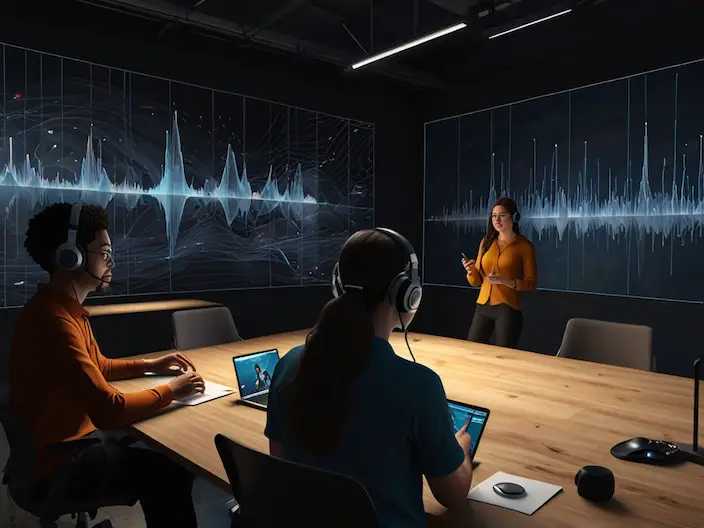
3D Audio in the Metaverse: Enhancing Presence and Realism
One of the main goals of the Metaverse is to create a space that significantly enhances users’ sense of presence in the virtual environment. As a core element, 3D audio supports this goal. In a virtual concert or social setting in the Metaverse, users can hear various sounds around them, increasing their sense of presence and strengthening virtual social interactions.
In these environments, individuals can identify the spatial location of sounds, enabling more dynamic interactions. For example, in a group event in the Metaverse, users can hear the voices of other participants from different directions, enhancing the experience of social interaction. To further enhance the sense of presence in Metaverse environments, principles of multisensory interaction and precise audio-visual synchronization are applied.
- Multisensory Interaction
This approach is based on the idea that real experiences cannot be fully understood through a single sense, but rather through the combination of multiple senses, creating a more comprehensive and realistic experience. In the Metaverse, combining 3D audio with visual elements and even virtual touch allows users to immerse themselves deeply in the environments. Multisensory interaction enables users to feel as if they are in a real space by hearing environmental sounds and seeing images that match them.
- Audio-Visual Synchronization
Precise synchronization of audio and visuals is essential for creating a realistic sense of presence. In the Metaverse, audio must perfectly match the movements and visuals of the environment. For example, if a user moves toward a sound source, the sound should gradually increase in volume or change direction. This synchronization requires precise audio and video processing algorithms that continuously monitor the user’s position and the sound source, adjusting sounds based on movement and distance. This process helps users feel as if they are truly present in a three-dimensional, real environment, enabling natural reactions to changes.
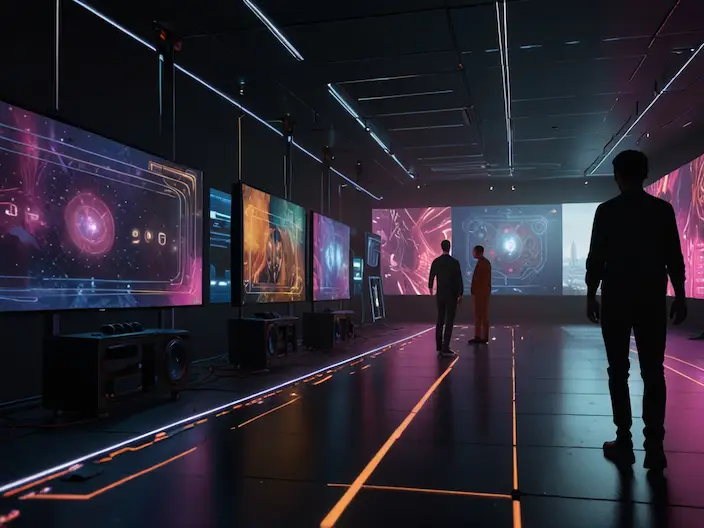
Technologies Used in 3D Audio
Two major technologies are employed in creating 3D audio for the Metaverse, playing a vital role in creating realistic and immersive experiences: Head-Related Transfer Function (HRTF) and Spatial Audio Processing.
- Head-Related Transfer Function (HRTF)
HRTF is a technique that simulates how the shape of a person’s head, ears, and torso affects incoming sounds. This function determines how sounds arriving from different angles are modified, including time differences between sounds reaching both ears, frequency amplification or attenuation, and other subtle shifts that help the brain determine sound direction. By using HRTF, 3D audio can accurately simulate the direction and position of sounds, allowing users to precisely locate sound sources in the virtual environment.
- Spatial Audio Processing
This technology performs audio processing with the aim of precise positioning and three-dimensional reproduction of sounds. In the Metaverse, sounds must be adjusted so that they can be projected from different directions in space, with each sound reaching the listener’s ears based on its spatial location. This processing includes complex algorithms for managing sound transmission, controlling volume, and adjusting frequencies to optimally synchronize sounds with user movements in space, creating an immersive audio experience. Spatial Audio Processing enables multidimensional and realistic experiences in the Metaverse.
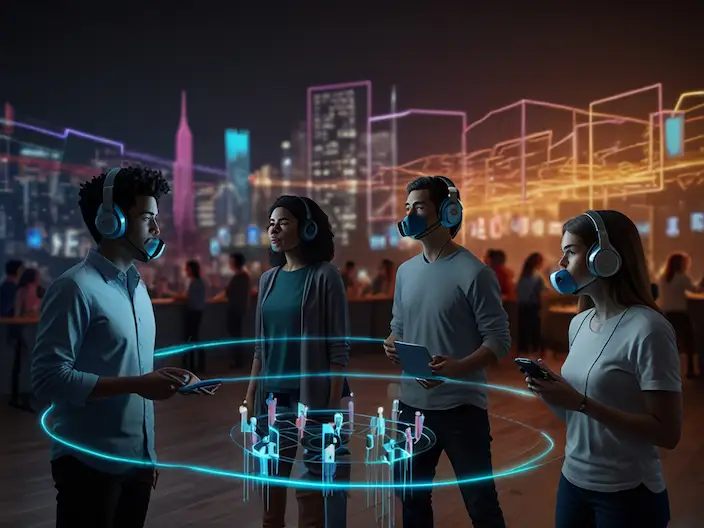
3D Audio in the ALFANOVA Metaverse
The ALFANOVA Metaverse, a leading platform in the Metaverse space, extensively utilizes 3D audio to create interactive and immersive experiences for its users. ALFANOVA allows users to engage in commerce, buy and sell products, and attend various events. 3D audio in ALFANOVA enables users to experience social and commercial interactions more realistically.
For instance, in a virtual store on ALFANOVA, 3D audio allows users to hear conversations of other buyers and sellers from different directions, giving them the feeling of being in a real store. Similarly, in work meetings held in the ALFANOVA Metaverse, this technology helps participants hear colleagues and business partners more clearly, fostering a more focused engagement.
3D Audio in Entertainment and Gaming Environments in the Metaverse
The gaming and digital entertainment industry was one of the first to utilize 3D audio technology. In virtual reality games and interactive environments, players can experience different sounds from various directions and distances, resulting in a more realistic sense of the gaming environment.
In the ALFANOVA Metaverse, 3D audio is used to enhance social experiences and group entertainment. In a group game, users can sense voices from specific locations, enhancing immersion and interaction, creating a reality-like experience.

3D Audio in Work Environments in the Metaverse
As remote work and virtual meetings evolve, work environments have also shifted towards using the Metaverse. 3D audio helps employees have more effective interactions in virtual meetings.
In the ALFANOVA Metaverse, virtual work meetings become immersive and natural experiences with 3D audio. Participants in meetings can feel colleagues speaking from different directions, making the meeting atmosphere more tangible and realistic. In this way, 3D audio enhances the quality and efficiency of meetings and work interactions within the ALFANOVA Metaverse.
Challenges and Opportunities of 3D Audio in the Metaverse
Despite its unique capabilities, 3D audio also faces challenges in development, such as the need for powerful hardware, optimization of audio processing, and compatibility issues with other virtual technologies.
However, there are also numerous opportunities for 3D audio in the metaverse. Platforms like AlphaNova Metaverse, which use advanced technologies, have succeeded in providing users with more realistic audio experiences. With advancements in AI and audio processing algorithms, 3D audio in the metaverse is expected to improve over time, offering users increasingly realistic experiences.

The Connection Between 3D Audio and Augmented Reality (AR) in the Metaverse
The synergy between 3D audio and augmented reality in the metaverse expands the boundaries of virtual experiences, enabling multi-sensory and more realistic interactions. This convergence allows users to enter multi-layered virtual spaces that closely resemble the real world, where synchronized audio and visuals create a deep, immersive experience.
For example, in virtual tourism, users can visit historical or natural sites with the help of AR and 3D audio, experiencing the authentic sounds of the environment, such as footsteps, birds, or the wind, as they would in the real world. This technology has also transformed education, allowing students to connect more deeply with educational content by immersing themselves in interactive spaces and hearing sounds related to the subject matter. In this way, 3D audio, combined with AR visuals, enriches and personalizes the learning process, helping students grasp complex concepts better. This convergence not only enhances user experience in the metaverse but also aids various industries in offering more effective interactions through realistic simulations.
AI Techniques for Enhancing 3D Audio
Artificial intelligence plays a crucial role in enhancing 3D audio. AI algorithms can simulate ambient sounds with greater precision, creating a more personalized experience for each user. These algorithms allow systems to make optimizations for improved sound quality and precise positioning within virtual spaces. Moreover, they can eliminate unnecessary noise, enabling 3D audio to perform well even in crowded environments.
Security and Privacy in 3D Audio
One important aspect of 3D audio in the metaverse is security and privacy. Since sounds are recorded and played live, there’s a risk of misuse and unauthorized recordings. To address these concerns, advanced encryption and security solutions are needed to ensure that 3D audio is accessible in a protected manner, safeguarding users’ privacy.
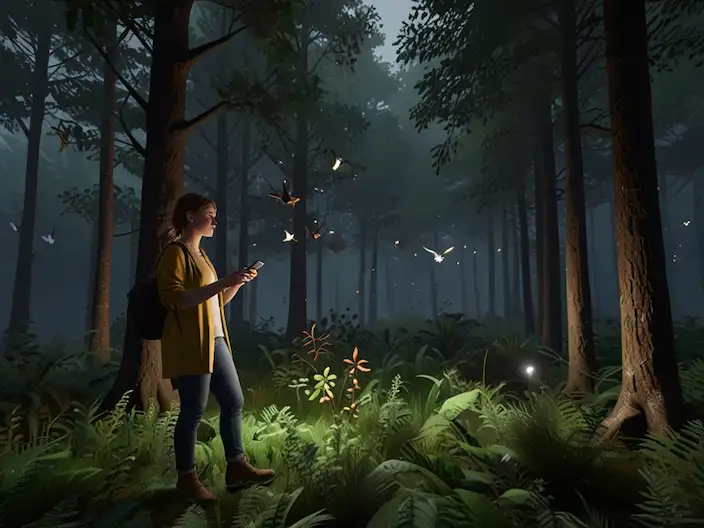
The Future of 3D Audio in the Metaverse
As technology advances, 3D audio in the metaverse will bring new features and capabilities. In the future, haptic audio technologies may allow users not only to hear but also to feel sounds. This technology will enable users to interact more fully with virtual environments, pushing their experiences to a new level of realism. Additionally, the use of voice commands in the metaverse will enhance interactive experiences, allowing users to interact with their environment using simple voice commands. (*Read more about haptic audio technology: This concept, recently integrated with 3D audio and virtual or augmented reality technologies, contributes to immersive experiences in the metaverse. In haptic audio, sounds are not only heard but also designed to create a sensation of touch or vibration in the body. This feature, through precise vibrations synchronized with sound, allows users to feel the sound beyond hearing it. For instance, in virtual concerts in the metaverse, users can experience the thrill of a real concert by hearing music and simultaneously feeling vibrations. Haptic audio could also enrich virtual education, providing practical scientific experiences where users not only hear sounds but also feel the associated vibrations. Consequently, haptic audio can add another layer to multi-sensory experiences in the metaverse, significantly enhancing the sense of presence.)
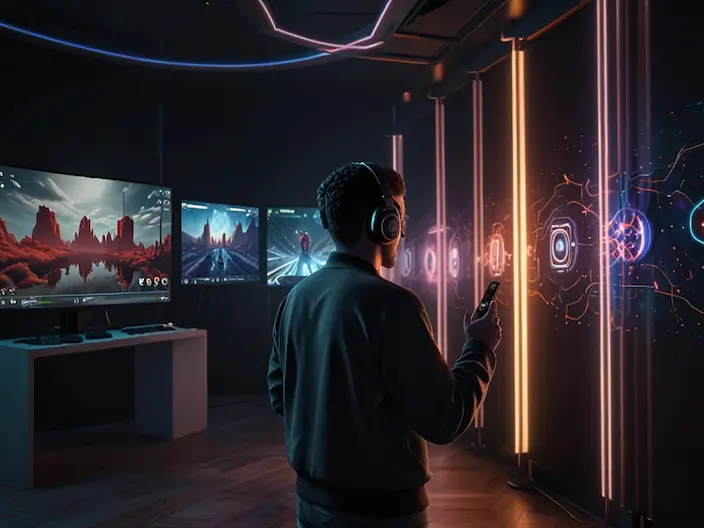
Conclusion
As a transformative technology, 3D audio has the potential to elevate virtual experiences in the metaverse to a new level of realism and engagement. From entertainment and gaming to work environments and business meetings, 3D audio can strengthen users’ sense of presence and improve social experiences.
At AlFANOVA Metaverse, the use of 3D audio enables users to have more effective communication and realistic experiences, underscoring that the metaverse is not merely a virtual space but a unique and novel human interaction experience.
Table of Contents
Toggle


One Response